Canali audio surround spiegati rapidamente:2.0, 2.1, 5.1, 7.1, 9.1 e altro!
Se stai configurando un sistema audio surround, probabilmente ti imbatterai in numeri come 2.1, 5.1, 7.1, 7.1.2, 9.1 e anche oltre! Ti starai chiedendo cosa sono questi strani numeri e cosa significano per il tuo sistema home theater.
Bene, questi numeri sono molto importanti in quanto descrivono la configurazione degli altoparlanti del sistema e, in alcuni casi, il formato del segnale audio fornito. Sono anche importanti quando si considera se il suono surround vale per te.
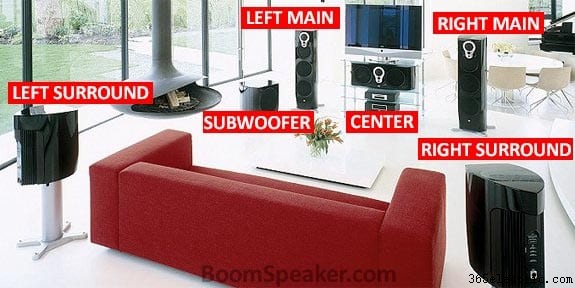
Entriamo quindi rapidamente nei dettagli di questi diversi sistemi di altoparlanti surround e di come sono configurati i vari sistemi di canali.
Tieni presente che se stai cercando un sistema audio wireless per la tua casa, un sistema multiroom wireless come Sonos o Heos è una scelta migliore. Puoi dare un'occhiata alla nostra recensione di Sonos vs Heos.
Cosa significano i numeri nella terminologia del suono surround?
Il primo numero (es:il "5" in 5.1)
Il primo numero di una configurazione del sistema di altoparlanti indica il numero di altoparlanti principali nella configurazione dell'audio surround. Quando parliamo di altoparlanti principali, ci riferiamo al centro, anteriore sinistro, anteriore destro e altri vari altoparlanti surround. 
I moderni sistemi surround avranno normalmente da 2 a 9 o anche più altoparlanti principali.
Il secondo numero (es:"1" in 5.1)
Il secondo numero della configurazione di un sistema di altoparlanti indica il numero di subwoofer nella configurazione. Nella maggior parte dei casi, questo numero sarà 1, il che significa che il sistema ha un solo sub. 
Tuttavia, alcune configurazioni aggiungono un sub aggiuntivo per ottenere bassi più pieni nel loro home theater e quindi vedrai invece il numero 2, ad esempio 7.2.
Il terzo numero (es:il "2" in 7.1.2)
Il terzo numero della configurazione di un sistema di altoparlanti viene visualizzato meno spesso e si riferisce agli altoparlanti di altezza. Questa configurazione indica il numero di altoparlanti ad "altezza" o "verso l'alto".

Gli altoparlanti di altezza sono altoparlanti surround aggiuntivi che sono normalmente posizionati sul soffitto nella parte anteriore dell'home theater. Questi altoparlanti aggiungono la dimensione dell'altezza al campo sonoro surround per creare un effetto tridimensionale.
Per questi altoparlanti, il soffitto non dovrebbe essere più alto di 14 piedi, ma dovrebbe essere almeno tre piedi direttamente sopra l'altoparlante anteriore principale sinistro e destro e rivolto direttamente all'ascoltatore.
Nella maggior parte dei casi, la maggior parte delle persone avrà due altoparlanti rivolti verso l'alto e quindi questo terzo numero è spesso 2.
Spiegazione dei sistemi audio surround per home theater:da 2.0 a 13.1
Sistema di altoparlanti stereo 2.0
I sistemi di altoparlanti 2.0 sono stereo normali, non audio surround. Questi sono i sistemi stereo più semplici che troverai in giro. In effetti, puoi consultare la nostra guida su come convertire l'audio stereo in surround 5.1.
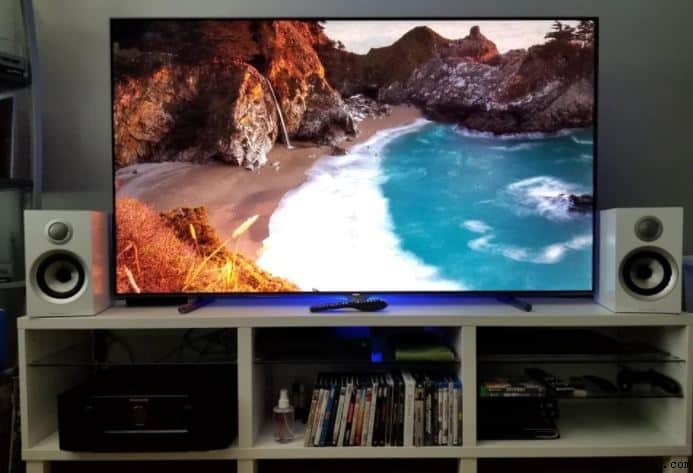
Questi stereo hanno un suono stereo 2.0 destro e sinistro con due canali distinti. Si compongono di un semplice canale sinistro e destro (o un altoparlante sinistro e destro).
Diciamo che sono di base perché sono proprio come i tuoi vecchi impianti stereo. Usano due canali degli altoparlanti per separare i suoni per creare un'esperienza più completa.
La maggior parte dei dispositivi musicali dedicati realizzati al giorno d'oggi dalle radio di base ai boombox avranno almeno un suono stereo e quindi possono essere classificati come sistemi audio surround 2.0.
Il vantaggio numero uno di una configurazione 2.0 è che è una configurazione conveniente. Molte persone avviano i loro home theater in questo modo poiché è poco costoso e semplice.
Impostazione del sistema di altoparlanti surround 2.0
Nella maggior parte dei casi, quando le persone impostano un sistema di altoparlanti 2.0, avranno due altoparlanti accanto al televisore, uno a sinistra e uno a destra.
Nella maggior parte dei casi, anche questi altoparlanti saranno alimentati da un ricevitore AV o da un amplificatore. Nelle configurazioni più semplici, la maggior parte delle persone sceglierà altoparlanti attivi che non necessitano di una fonte di alimentazione separata per mantenere la configurazione semplice e funzionale. 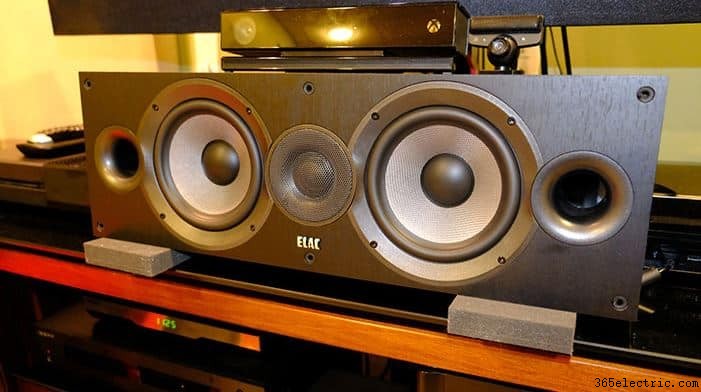
Uno svantaggio dei sistemi 2.0 è che non hanno un subwoofer separato e quindi la qualità dei bassi potrebbe essere carente a meno che non si ottengano dei buoni altoparlanti.
Poiché questo sistema si concentra sul suono nella parte anteriore, non ci sono nemmeno altoparlanti circostanti, quindi l'impostazione 2.0 è ancora piuttosto semplice. Ancora una volta, puoi consultare la nostra guida su come convertire l'audio stereo 2.0 in sistemi audio surround 5.1.
Una considerazione importante per questi semplici sistemi è garantire che i tuoi altoparlanti siano compatibili con tutti i tuoi dispositivi, dalla tour TV allo smartphone e che abbiano funzionalità wireless, incluso il Bluetooth.
Sistema di altoparlanti surround 2.1
La configurazione del sistema di altoparlanti 2.1 è un passo avanti rispetto alla configurazione 2.0. In questa configurazione, hai gli altoparlanti sinistro e destro e un subwoofer.
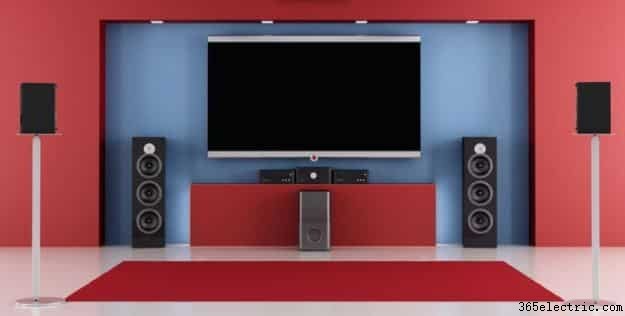
Avendo un subwoofer nella configurazione, il tuo sistema surround fornirà bassi migliori.
Impostazione del sistema di altoparlanti surround 2.1
La configurazione 2.1 sarà simile alla configurazione 2.1 con ciascun altoparlante su ciascun lato del televisore. Il subwoofer sarà normalmente posizionato in un angolo vicino al muro.
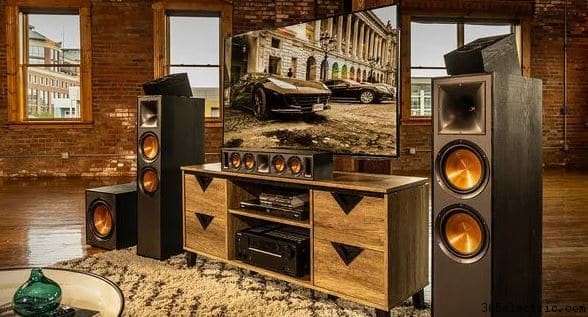
Tuttavia, dipende davvero poiché ogni stanza è diversa, dovresti spostare il subwoofer per ottenere l'effetto dei bassi completo. In effetti, molte persone hanno scoperto che la posizione migliore per il subwoofer è dietro il divano.
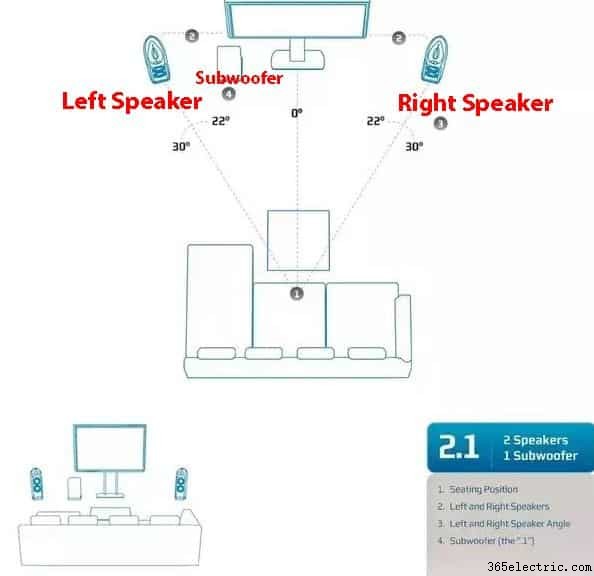
Molte persone al giorno d'oggi scelgono semplicemente una soundbar a 2.1 canali per ottenere il subwoofer 2.1 nella configurazione. Questa configurazione è ottima per qualsiasi home theater se non hai i fondi per dispositivi aggiuntivi. In effetti, consigliamo di utilizzare almeno una configurazione 2.1 nel tuo sistema home theater .
Sistema di altoparlanti surround 3.1
Un sistema audio 3.1 è un sistema audio a quattro canali. Questa configurazione ha tre altoparlanti principali e un subwoofer.
Ciò significa che il sistema sarà composto da un altoparlante sinistro, centrale e destro. 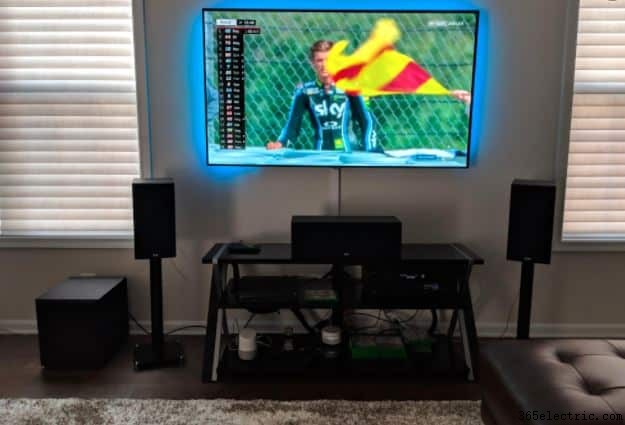
Con 3.1, otterrai un altoparlante centrale aggiuntivo rispetto alla configurazione 2.1. Questo altoparlante centrale separa il dialogo audio che è stato elaborato per un canale distinto. Tuttavia, i canali sinistro e destro rimangono distinti.
Pertanto, mentre gli altoparlanti centrali riproducono i dialoghi, gli altoparlanti sinistro e destro verranno utilizzati per effetti, musica e altri suoni stereo.
Impostazione del sistema di altoparlanti surround 3.1
Con la configurazione 3.1, gli altoparlanti sinistro e destro sono normalmente posizionati ai lati della TV con l'altoparlante centrale sopra o sotto la TV e anche il subwoofer è normalmente posizionato sul pavimento al centro della configurazione.
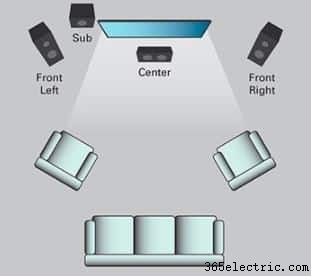
I sistemi 3.1 sono ancora relativamente semplici e non hanno altoparlanti circostanti. Tuttavia, l'aggiunta dell'altoparlante centrale fa un buon lavoro nel migliorare l'audio cinematografico.
La configurazione 3.1 è molto popolare in alcune soundbar. Queste soundbar hanno tre altoparlanti o una barra nella parte anteriore e hanno persino un subwoofer integrato. Altri potrebbero avere il sub separato.
Sistema di altoparlanti surround 4.1
Il sistema audio surround 4.1 home theater è un passo avanti rispetto al sistema di altoparlanti 3.1. È una configurazione molto comune e include quanto segue:
- anteriore sinistro e anteriore destro
- posteriore sinistro e posteriore destro
- un subwoofer.

Ciò significa che si tratta di una configurazione a cinque canali, tranne per il fatto che non include il tipico diffusore del canale centrale.
Sistema di altoparlanti surround 5.1
Il sistema home theater 5.1 è il sistema home theater più popolare in circolazione. Offrendo un vero suono surround, questa configurazione home theater è diventata il punto di riferimento per il suono surround home theater.Perché il sistema audio surround 5.1 è popolare?
Vedrai il sistema audio surround 5.1 menzionato abbastanza frequentemente quando cerchi o sfogli i prodotti home theater. Ecco perché la configurazione degli altoparlanti 5.1 è così popolare:- Semplice: È il vero sistema audio surround più semplice
- Audio coinvolgente: Questa configurazione offre un'esperienza audio molto più coinvolgente rispetto a qualsiasi normale stereo a due o tre canali.
- Considerazioni sullo spazio: È ottimo per gli spazi più piccoli. Un sistema surround 5.1 è abbastanza buono per il suono surround ma include solo 5 altoparlanti e un sub. Questo è buono per gli spazi più piccoli una volta che sai come posizionarli. Consulta il nostro articolo su come configurare gli altoparlanti 5.1 in una piccola stanza.
- Connettività: Le configurazioni surround 5.1 sono molto popolari e quindi offrono un'ampia gamma di opzioni di connessione. Ad esempio, alcuni sistemi 5.1 possono anche connettersi a un telefono cellulare. Ad esempio, dai un'occhiata a questa guida su come collegare i tuoi altoparlanti Philips 5.1 al tuo cellulare.
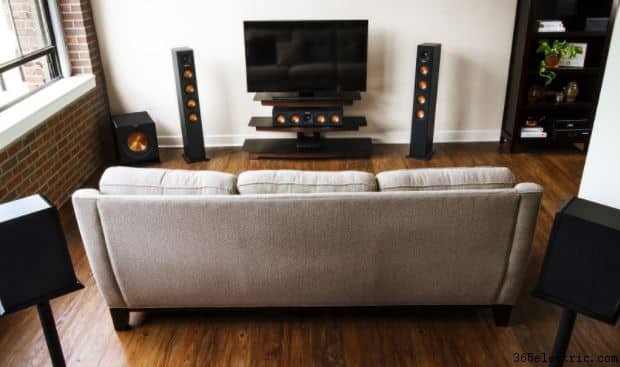
Troverai sistemi home theater di tutte le forme e dimensioni che utilizzano la configurazione del sistema surround 5.1 per creare un'esperienza audio eccellente.
5.1 Configurazione del sistema di altoparlanti
La configurazione del sistema di altoparlanti 5.1 è abbastanza semplice. Ha sei canali, che includono cinque altoparlanti principali e ovviamente un subwoofer.
Ecco la configurazione tipica:
- Relatore principale: Il sistema normalmente ha tre altoparlanti nella parte anteriore con uno a sinistra, uno al centro e uno a destra del televisore.
- Subwoofer: il sub è normalmente posizionato al centro o all'interno o agli angoli della stanza.
- Altoparlanti surround: Ci sono anche due altoparlanti surround che sono normalmente posizionati nella parte posteriore della stanza, normalmente su entrambi i lati del divano, uno a sinistra e uno a destra. Questi altoparlanti sono anche indicati come altoparlanti satellitari. Sono diversi dai tipici altoparlanti da scaffale con cui potresti avere familiarità. Se non sei a conoscenza della differenza, dai un'occhiata al nostro articolo sugli altoparlanti satellitari rispetto agli altoparlanti da scaffale.
Si noti tuttavia che questa è solo la configurazione più comune, il sistema di altoparlanti 5.1 è abbastanza versatile e può essere configurato in molti modi a seconda delle esigenze uniche della stanza dell'home theater. 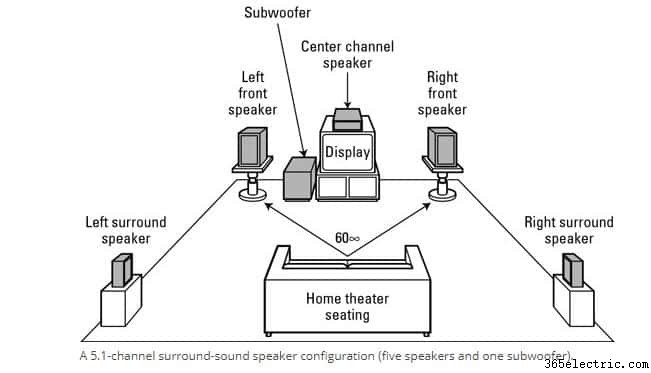
Tuttavia, se hai abbastanza spazio nel tuo home theater, la configurazione ideale è la seguente:
Altoparlanti anteriori: Gli altoparlanti anteriori sinistro e anteriore destro ad un angolo di 22-30 gradi rispetto all'altoparlante centrale/TV
Subwoofer: Idealmente, dovresti posizionare il sottomarino al centro sul pavimento o in uno degli angoli. Puoi anche posizionare il sottomarino dietro il divano se desideri l'effetto di vibrazione. Tuttavia, con i subwoofer è meglio spostarlo fino a ottenere le migliori prestazioni dei bassi.
Altoparlanti surround: Gli altoparlanti del suono surround devono essere posizionati a un angolo di 90-110 gradi rispetto all'altoparlante centrale/TV.
Il sistema di altoparlanti 5.1 è così popolare che troverai questa configurazione compatibile con molti tipi di dispositivi.
In effetti, molti laptop e computer desktop sono dotati di una scheda audio 5.1, quindi può essere utilizzata con questi dispositivi e qualsiasi cosa, dai normali DVD ai cinema e alle smart TV digitali.
Sistema di altoparlanti surround 6.1
La configurazione del suono surround home theater 6.1 è un passo avanti rispetto alla configurazione 5.1. 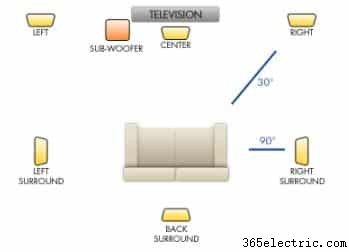
In effetti, è proprio come un sistema surround 5.1 ma include un altoparlante aggiuntivo. Questo altoparlante aiuta a creare un'esperienza sonora più completa e decisamente più realistica.
Ecco la configurazione:
- Tutto è configurato come il sistema 5.1
- È presente un altoparlante aggiuntivo che viene normalmente posizionato nella parte posteriore centrale dell'home theater
L'idea della configurazione 6.1 è che aggiungerà una dimensione audio aggiuntiva alla configurazione dell'home theater senza dover ricorrere a una configurazione audio surround 7.1 completa.
Questa è un'ottima idea se stai cercando quell'effetto aggiuntivo ma hai un budget limitato. Puoi aggiungere un altro altoparlante posteriore in seguito, se necessario, per completare la configurazione 7.1 di seguito.
7.1 and 7.1.2 Surround Sound Systems
7.1 Surround Sound System
The 7.1 speaker configuration is the next step up from the 6.1 speaker system. This means that it includes all the components of a regular 5.1 channel speaker system but also includes two rear speakers, one more than the 6.1 system. 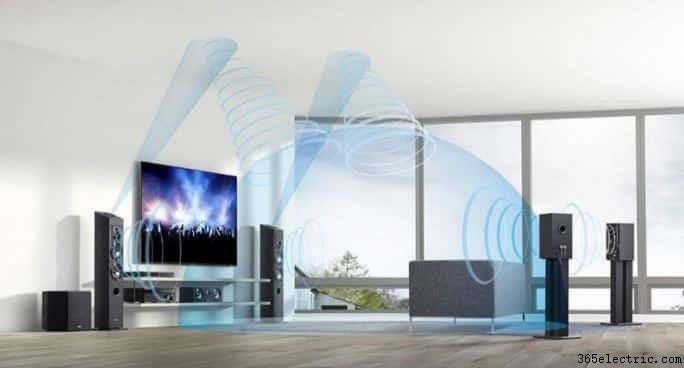
These two rear speakers deliver surround sound which means that the two sides surround speakers won’t be responsible for both rear and surround sound unlike in 5.1 systems.
This gives an even more full, rounded sound experience to complete that surround sound cinematic effect. This makes it an eight-channel speaker system and is quite common.
7.1 Speaker System Setup
The 7.1 speaker system is similar to the 5.1 as mentioned before. In fact, the setup is the same except for the addition of two rear speakers. H
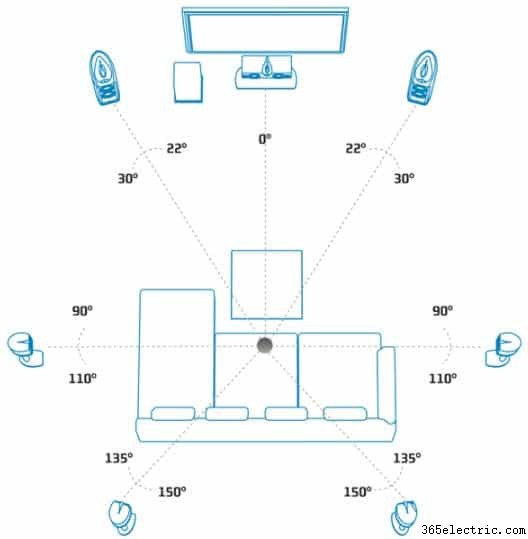
In general, the two additional rear speakers should ideally be placed at a 135 to a 150-degree angle from the center channel/TV. This ensures that you will achieve the best ad most optimal surround sound experience by amplifying background sounds. These are also satellite speakers. Remember, these are different from say bookshelf speakers (check out satellite vs bookshelf speakers).
You can get a better idea as to what this means by checking our our guide on surround vs surround back speakers.
7.1.2 Surround Sound System
Remember above we explained that the last number refers to the number of ‘height’ speakers?So what are height speakers?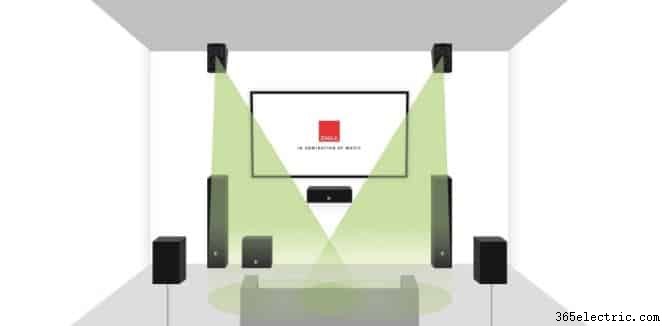 Height speakers are additional surround sound speakers that are normally placed on the ceiling at the front of the home theater.These speakers add the dimension of height to the surround sound field to create a three-dimensional effect. So the 7.1.2 speaker system configuration is simply the 7.1 speaker system with 7 speakers and a subwoofer.The system includes the addition of two height speakers which are normally ceiling speakers or up-ward firing Dolby Atmos speakers.
Height speakers are additional surround sound speakers that are normally placed on the ceiling at the front of the home theater.These speakers add the dimension of height to the surround sound field to create a three-dimensional effect. So the 7.1.2 speaker system configuration is simply the 7.1 speaker system with 7 speakers and a subwoofer.The system includes the addition of two height speakers which are normally ceiling speakers or up-ward firing Dolby Atmos speakers. 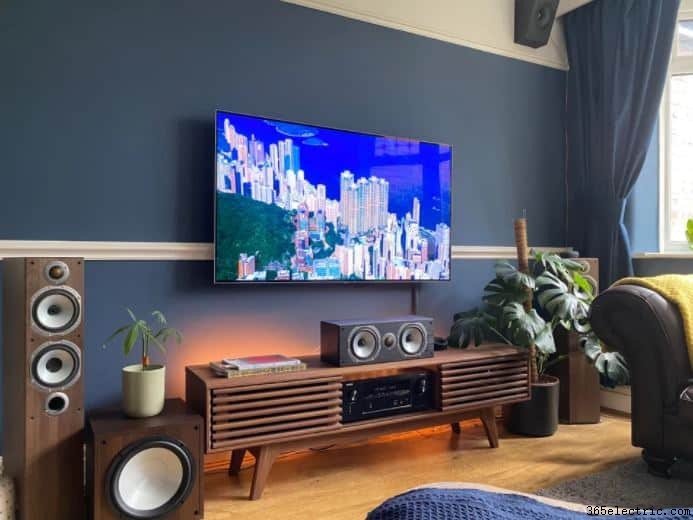 You will find this setup mostly for Dolby Atmos in-ceiling speakers. Dolby Atmos is a surround sound technology that adds the height dimensions to surround sound systems to create that 3D effect in the surround sound field. This type of configuration is for more high-end home theaters as it takes a bit more work and is certainly more expensive than the simpler configurations. However, it’s worth the money because all these speakers work together to provides a top-notch, realistic, and immersive home theater cinematic experience.
You will find this setup mostly for Dolby Atmos in-ceiling speakers. Dolby Atmos is a surround sound technology that adds the height dimensions to surround sound systems to create that 3D effect in the surround sound field. This type of configuration is for more high-end home theaters as it takes a bit more work and is certainly more expensive than the simpler configurations. However, it’s worth the money because all these speakers work together to provides a top-notch, realistic, and immersive home theater cinematic experience. 7.1.2 Surround Sound System Setup
Firstly, because this system normally includes ceiling speakers, you will find that it is most suited for basic ceilings made of drywall or plaster.
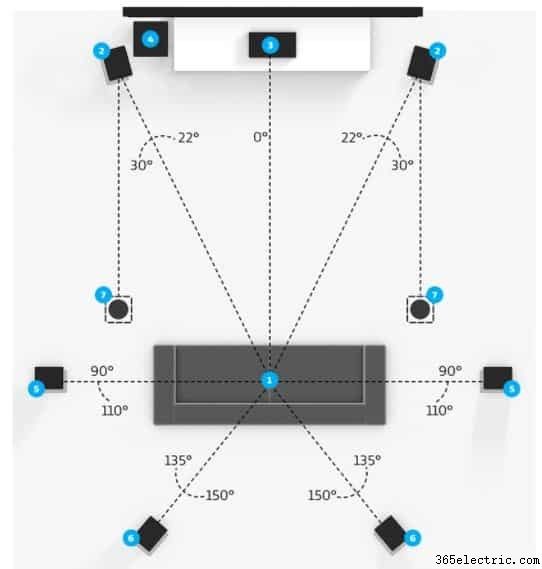
Additionally, the ceiling shouldn’t be higher than 14 feet but should be at least three feet directly above your left and right main front speaker and face the listener directly.
This surround sound configuration is becoming more popular in modern home theaters and does well to create a dome of sound that is like nothing else.
One important consideration however is to ensure that your system is Dolby Atmos compatible if you are using Dolby Atmo upward-firing speakers.
7.2 Surround Sound System
While 5.1 systems are the most popular today, 7.2 surround sound systems are becoming quite popular as well.
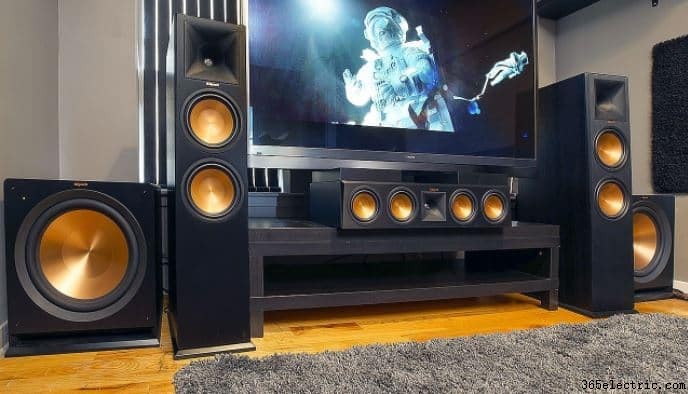
Today, many modern receivers support this surround sound layout. 7.2 surround sound systems are very similar to the 7.1 surround sound setup except that it has an additional subwoofer.
Why do you need two subwoofers?
Well, first of all, you don’t necessarily need two subwoofers. One is fine for most people. However, if you want stronger and more balanced bass, two subwoofers are a great choice.
It’s about creating a better overall bass experience really with excellent bass all around the room. As such, if you are a bass bum, a second subwoofer is a great choice for you.
7.2 Surround Sound System Setup
The 7.2 setup is similar to that of the 7.1 except that there is an additional subwoofer. There are many placement options for your subwoofers to get more bass. 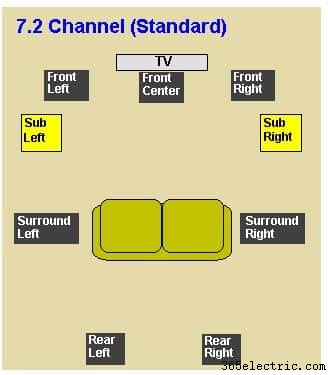
However, the most important consideration initially is that your receiver or amplifier needs to support two subwoofers to support the 7.2 configurations.
9.1 Surround Sound:The Cinematic Experience
Now for the hard-hitting, mega 9.1 home theater surround sound system. The 9.1 home theater surround system is a ten-channel surround sound system that includes nine speakers and a subwoofer.
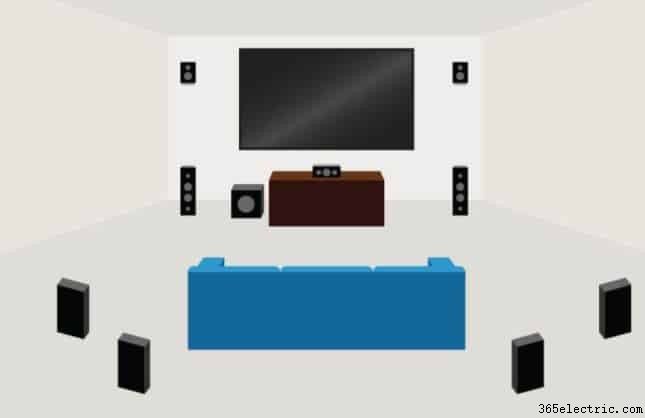
Of course, these systems are quite expensive and are for very high-end home theater surround sound setup for the most discerning of audiophiles or those who crave a completely immersive surround sound experience.
This is why the 9.1 setup is not as common as the 5.1 or 7.1.2 home theater system.
The 9.1 surround system is really the same as the 7.1.2 configuration with the addition of two height speakers.
Remember, the height speakers are Dolby Atmos speakers that are used to add the dimension of height to the surround field to create a 3D surround sound effect.
9.1 Surround Sound System Setup
Setting up a 9.1 home theater system is not extremely complicated, however, each component should be positioned and chosen carefully considering the acoustics of the room and the specs of the audio components.
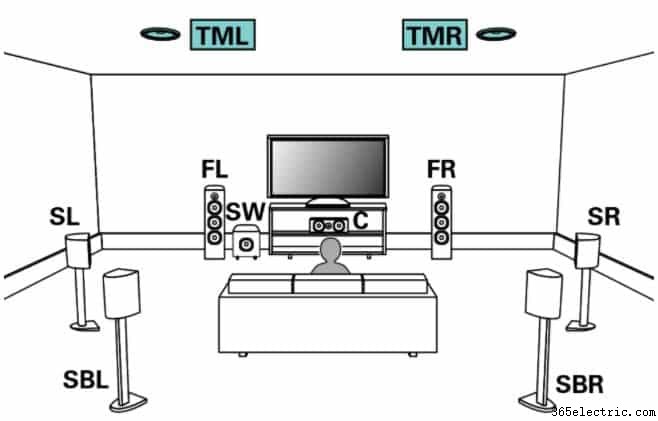
Failing to do so can cause any number of problems This is why setting up such a system requires a professional audio technician. For example, you will need a modern receiver that can handle the 9.1 configuration.
Keep in mind that similar to the 7.1 systems, so the ceiling shouldn’t be higher than 14 feet but should be at least three feet directly above your left and right main front speaker and face the listener directly.
9.1.2 Home Theater Surround System
The 9.1.2 surround sound home theater system is similar to the 9.1 system except that it has two front wide speakers, instead of the two front height speakers.
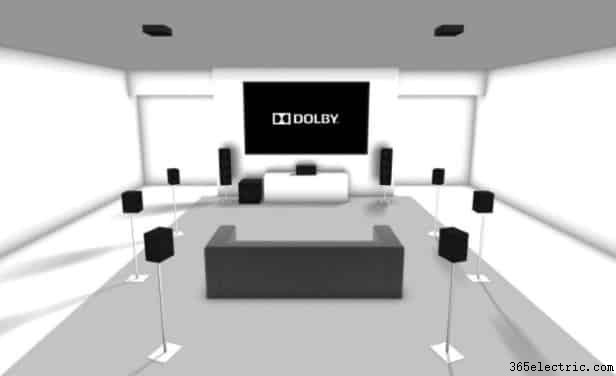
This is in addition to the two ceiling or upward-firing speakers.
If that is confusing, let’s explain further. In the 9.1.2 home theater system, you have a left and right front speaker, a center speaker, a subwoofer, a left and a right front wide speaker, a left and a right surround speaker, a left and a right rear speaker, and a left and a right ceiling speaker.
9.1.2 Surround Sound System Setup
The 9.1.2 configuration setup is to create a fully immersive, high-end dome sound experience. 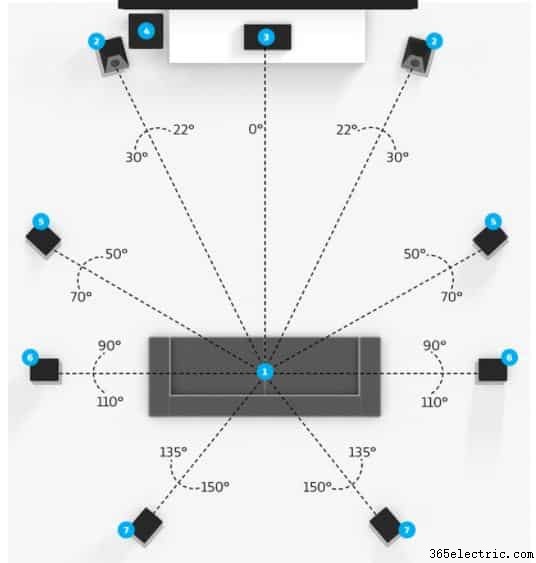
The left and right speakers provide an additional layer of sound to create that dome effect.
Here are the typical components:
| Item # | Description | Remarks |
| 2 | Center Speaker | 1 set |
| 3 | Left / Right Speaker | 1 for each side (L/R) |
| 4 | Left / Right Front Wide Speaker | 1 for each side (L/R) |
| 5 | Left / Right Surround Speaker | 1 for each side (L/R) |
| 6 | Left / Right Back Speaker | 1 for each side (L/R) |
| 7 | Left / Right Ceiling Speaker | 1 for each side (L/R) |
| 8 | Subwoofer | 1 set |
10.2 Home Theater Surround Sound System
The hard-hitting 10.2 home theater surround sound system is a full-blown, professional and advanced home theater system for high-end home theaters.
This one is for the most advanced home theater professionals who are seeking the highest fidelity in home theater setups.
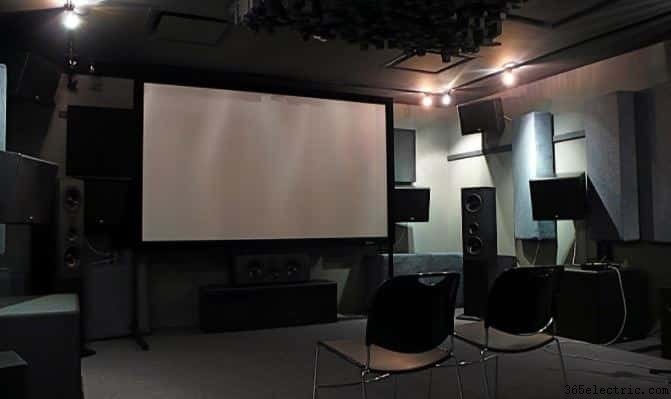
The 10.2 configuration includes 14 discrete channels if the left and right point surround channels are included.
The 10.2 system was in fact built by the developers of THX, the high fidelity audio/visual reproduction standards for movie theaters.
This configuration includes seven front channels:left and right wide speakers, left and right height speakers, left and right front speakers, and a center front speaker.
There are three surround speakers, including one left, one back, and one right, and two subwoofers.
10.2 Surround Sound System Setup
The 10.2 system is of course not typical and so only a few, dedicated devices are currently sold to accommodate this configuration.
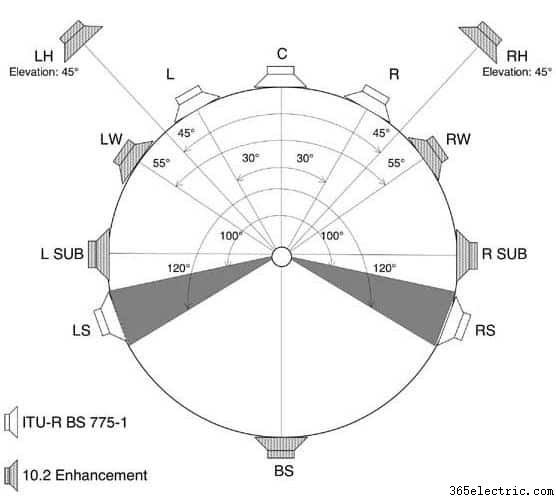
Here is the typical setup:
- Seven front channels: Left Wide, Left Height, Left, Center, Right, Right Height, Right Wide
- Three surround channels: Left Surround, Back Surround, Right Surround
- Two LFE channels: LFE Left and LFE Right
12.2 Home Theater Surround Sound System
The 12.2 home theater system is rather similar to the 10.2 setup except that the 12.2 augments the LS (left surround) and RS (right surround) channels by two-point surround channels.
This way, the overall sound can be better manipulated and controlled by the system because the mixer will be allowed to shift sounds in a distinct 360° circle around the movie watcher.
These additional speakers may be referred to as “point surround” or “diffuse surround” channels.
12.2 Surround Sound System Setup
These point surround speakers are normally placed at the same angles as the standard surround speakers at +/-120 degrees. As already mentioned, these speakers are made into diffuse radiators using dipole speakers.
Here is the setup with point surround channels:- Five front speakers: Left Wide, Left, Center, Right and Right Wide
- Five surround channels: Left Surround Diffuse, Left Surround Direct, Back Surround, Right Surround Diffuse and Right Surround Direct
- Two LFE channels: LFE Left, LFE Right (these are the subwoofers)
- Two Height channels: Left Height, Right Height
13.1 Home Theater Surround Sound and Beyond
The amazing 13.1 home theater surround sound system is one of the most complex home theater configurations out there.
As you might imagine, these setups are rather rare and you certainly won’t find them in a typical home theater system in a regular home. At this point, you are talking about high fidelity music rooms and theaters.
Higher Surround Sound Configurations
Dolby Digital Plus supports surround systems up to 13.1, and there are many other configurations for surround sound, like 12.2, 22.2, and more.
While these surround sound setups are fascinating and complex, they are a rare find in a typical home theater. However, they are fun to research and learn about, and there’s nothing wrong with dreaming of the possibilities!
Do You Need a Professional To Install Your Surround Sound System?
For simple setups such as the 3.1, 5.1 or even 7.2 home theater systems, you can surely go about that kind of setup yourself.
However, for the more complex configurations like the 9.1 or 10.2, you certainly need professional installers who have experience with things like overhead speakers and room acoustics.
Please be reminded that just purchasing a complex home theater surround system doesn’t mean or guarantee the best experience unless the room is set up professionally considering its own unique acoustics.
Consider Dolby Atmos
Many of these systems are Dolby Atmos compatible or based on the setup require Dolby Atmos speakers. If you want to create a cinematic experience, it’s not as good as RPX, but its the best you’ll get to in your house.
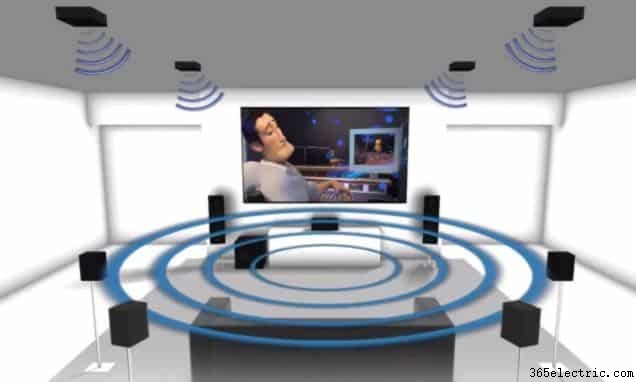
Dolby Atmos is a surround sound technology that creates a fuller cinematic experiencing which is high quality and highly realistic.
However, not all devices including receivers and amplifiers are compatible with Dolby Atmos. Before you go out and buy Dolby speakers, make sure your current devices are compatible. In addition, not all system,s support Dolby. For example, YouTube does not support Dolby audio. In fact, youtube does not support surround sound. For more information, read our article where we explore the question – does youtube support surround sound.
What Is The Best Number of Home Theater Channels
You may be surprised to learn that there is no magic number for how many speaker channels you should use. This is why we have so many different configurations.
The best options in terms of channels for you will depend solely on your room’s configurations including its size, shape, furniture, whether your home theater is soundproof or not, and many other considerations.
However, there are a number of rules of thumb to consider. For example, if your home theater is small, then you’ll want to go with a smaller number of speaker channels.
If you are having issues with your surround system where one or more speakers are not working, please check out our guide on how to make all speakers work on surround sound.
Surround Sound and Streaming Services
Today, many people get their content from streaming services like Netflix. While Netflix does support surround sound, not all content is compatible with surround sound.
For more information on how to determine if your Netflix title is compatible with surround sound and how to get Netflix to play through surround sound check out this guide.
What Does Each Channel In A Surround Sound System Do?
The audio signals connected to a surround sound system is divided through the different channels, which are then fed to the various speakers to be reproduced in specified frequencies such that the same sound is reproduced through the speakers in different ways.
Depending on the effect intended, emphasis on the sound quality will vary according to the channel it is fed into as dictated by the frequency settings on that speaker.
What Is The Difference Between 5.1 Channel And 2.1 Channel?
The bigger a soundbar is, the more channels it has. While a 2.1 channel soundbar has just two channels (one on either side) and a subwoofer, a 5.1 channel soundbar has two side speakers, a center channel and two extra speakers in the back which are either built-in or external.
What Is The Difference Between 3.1 Channel And 5.1 Channel?
Soundbars with 3.1 channel contain a channel more than the 2.1 soundbars, a center channel for better, clearer speech and background sound effects.
5.1 Soundbars come with an external subwoofer and five other channels –two side channels, one center, one surround left, and one surround right channels.
How Far Away Should Surround Speakers Be?
It is recommended that the front speakers be at least three feet away from the center speaker (which should be aligned with the TV) on either side, facing the audience. They should also be at least 6 feet back from the viewers.
Conclusione
Surround sound channels can seem rather confusing at first with all the numbers and strange terminology. However, once you know what you are really looking at, you will find that it is quite simple really.
